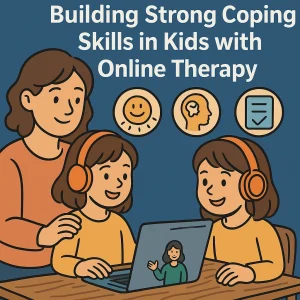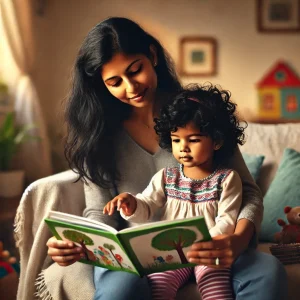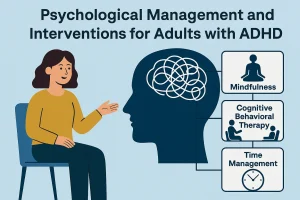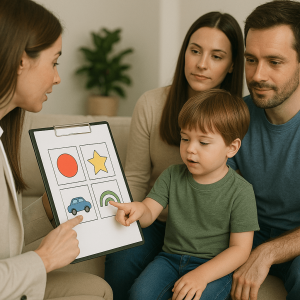Emotional Regulation for Kids: Easy Tips and Activities
By Wellness Hub
Last Updated: June 27, 2024
Emotional regulation is a crucial skill in children’s development, referring to the ability to manage and respond to an emotional experience in an appropriate manner. This ability contributes to social competence, academic success, and overall well-being. Parents and caregivers play a pivotal role in nurturing this skill, guiding children through complex feelings, and teaching them how to cope with emotional challenges effectively. By fostering emotional regulation, parents ensure their children can navigate life’s ups and downs with resilience and poise, setting the foundation for a healthy emotional future.
What is Emotional Regulation?
Emotional regulation refers to managing and healthily responding to our emotions. It’s about recognizing our feelings, understanding why we’re experiencing them, and deciding how to respond. This skill is crucial because it helps us navigate everyday challenges, maintain positive interactions with others, and promote mental wellness.
For young children, emotional regulation might start with simple strategies like taking deep breaths or using words to express feelings. As children grow, their methods of managing emotions become more complex, integrating more sophisticated techniques such as problem-solving or seeking support from others.
Discuss Its Relevance Throughout Different Stages of Childhood
- Early Childhood: In toddlers and preschoolers, emotional regulation is closely tied to their immediate environment. Managing feelings like frustration or excitement at this stage lays the groundwork for social skills and academic success.
- School Age: Children encounter new social and academic pressures as they enter school. Effective emotional regulation helps them handle peer interactions and academic challenges and begin to manage stress independently.
- Adolescence: Teenagers face complex emotional landscapes and increased pressures from school, peers, and future planning. Emotional regulation is key to developing identity, self-esteem, and resilience against mental health challenges.
Emotional regulation is not just about controlling emotions; it’s about fostering a balanced approach to handling life’s ups and downs. As children progress through these stages, their ability to regulate their emotions effectively plays a crucial role in their overall development and well-being.
Read More: Unlocking Potential: How OT Empowers Kids to Thrive
Signs of Emotional Regulation Difficulties
Identifying emotional regulation difficulties in children is crucial for early intervention and support. Here are common signs that may indicate your child is struggling with emotional regulation:
- Frequent Tantrums or Meltdowns: Unlike typical tantrums that occur occasionally in young children, frequent and intense outbursts can indicate emotional regulation issues. These might happen over seemingly minor frustrations and are more intense than expected for the child’s age.
- Difficulty Calming Down: Children who struggle to regain calm after an emotional upset may struggle with emotional regulation. This can look like prolonged crying or agitation that doesn’t subside with typical comfort measures.
- Extreme Responses to Changes: If a child has excessively negative reactions to changes in routine or minor plans—like a change in dinner plans or a different route to school—this might signal difficulty in managing emotions.
- Social Withdrawal: Some children may withdraw from interactions with peers or adults because they feel overwhelmed. This might manifest as avoiding eye contact, playing alone frequently, or reluctance to participate in group activities.
- Physical Symptoms: Frequent headaches or stomachaches without a clear medical cause can be signs of stress and difficulties with emotional regulation.
- Rapid Mood Swings: Watch for quick shifts in mood from happy to sad or angry without obvious reasons. These sudden changes can indicate that a child struggles to manage their emotions.
3 Key Strategies to Teach Emotional Regulation
1. Modeling Behavior:
Parents are the first role models children look up to, making it crucial to demonstrate emotional regulation in everyday situations. When you manage your emotions effectively, children learn through observation.
For instance, show how to take deep breaths when upset or how to articulate feelings calmly when frustrated. This hands-on demonstration is effective and helps build a trusting relationship where emotions are openly discussed and managed.
2. Creating a Calm Environment
Transforming your home into a sanctuary of calmness plays a pivotal role in teaching emotional regulation. Start by organizing spaces to reduce chaos and clutter, which can significantly decrease stress levels for children and adults. Incorporate soft lighting, comfortable seating, and quiet corners equipped with stress-relieving activities such as puzzles or coloring books. These changes can create a supportive environment that encourages calmness and focus, which is essential for emotional growth.
3. Communication Techniques
Discussing emotions should be a regular part of your daily interaction. Use clear, age-appropriate language to talk about feelings and encourage children to express themselves. Here’s a detailed table to help you integrate these techniques effectively:
| Technique | Description | Example |
|---|---|---|
| Use Emotional Vocabulary | Introduce words that describe emotions to build emotional IQ | “I see you’re angry; that’s okay.” |
| Validate Feelings | Acknowledge and accept the child’s emotions | “I see you’re angry, that’s okay”. |
| Problem Solving Together | Engage in finding solutions together | “What can we do to make it better?” |
Adopting these strategies can significantly aid your child’s ability to understand and manage emotions, leading to better emotional health and interpersonal relationships.
Activities to Support Emotional Development
Emotional development is crucial for children as it influences their social skills, empathy, and ability to navigate challenges. Here are ten effective activities that can significantly enhance your child’s emotional growth, presented in an easy-to-reference table format.
| Activity | Description | Age Group |
|---|---|---|
| Storytelling | Engage in storytelling sessions that include discussing characters’ feelings and reactions. This helps children understand and express their own emotions. | 3-8 years |
| Emotion Matching Games | Use card games where kids match facial expressions to corresponding emotions. This builds their ability to recognize and label feelings accurately. | 3-7 years |
| Role-Playing | Set up scenarios where children play different roles, encouraging them to express varied emotions and react to others’ feelings. | 4-9 years |
| Art Therapy | Encourage drawing or painting as a form of expressing feelings. Discuss the colors and shapes they use and what emotions they represent. | All ages |
| Music and Movement | Use music and dance to express different emotions. Have children choose songs that reflect how they feel, enhancing emotional awareness. | 3-10 years |
| Journaling | Older children can benefit from writing about their daily experiences and emotions, which aids in processing feelings. | 7+ years |
| Emotion Wheel | Create an emotion wheel with various emotions and situations. Kids can spin the wheel and discuss what they would feel in those scenarios. | 4-8 years |
| Gratitude Exercises | Teach children to think about and share things they are grateful for daily, which promotes positive emotions and gratitude. | All ages |
| Puppet Play | Use puppets to act out different situations, allowing children to explore complex emotions in a controlled and safe environment. | 3-8 years |
| Breathing Techniques | Introduce simple mindfulness activities, such as deep breathing exercises, to help manage emotions during stressful or overwhelming moments. | 5+ years |
These activities are designed to be fun and educational, providing children with the tools they need to develop emotional intelligence and resilience. Implementing these into daily routines can significantly affect your child’s ability to understand and manage their emotions effectively.
Handling Meltdowns and Intense Emotions
When faced with a child’s emotional meltdown, it can be challenging for parents and caregivers to maintain composure and effectively manage the situation. Here’s a step-by-step guide to help you navigate these intense moments with calmness and support.
Step-by-Step Guide During a Child’s Emotional Meltdown:
- Stay Calm: Your calmness is contagious. Take deep breaths and maintain a composed demeanor to help your child feel more secure.
- Acknowledge Their Feelings: Validate their emotions by saying, “I see you’re upset, and that’s okay.”
- Create a Safe Space: Ensure the environment is safe and free from anything that could harm your child. Sometimes, a quiet, comforting space can help de-escalate emotions.
- Use Simple Language: Communicate with simple, clear words. Say, “I understand you’re angry, but I’m here with you.”
- Offer Comfort: If your child is receptive, hug or hold their hand. Physical comfort can be very soothing.
- Distract and Redirect: Gently redirect their attention to another activity they enjoy or can engage with calmly after they’ve had a moment to express their feelings.
- Set Limits If Necessary: Set gentle but firm limits if the behavior escalates. Explain the consequences of any harmful actions in a way they can understand.
- Post-Meltdown Discussion: Once calm, discuss what happened and explore better ways to express emotions in the future.
Read More: Child Psychology : Emotional and Mental health in Kids
How to Remain Calm and Supportive During Intense Emotional Expressions:Child Psychology : Emotional and Mental health in Kids
- Practice Self-awareness: Recognize your triggers and stress signs. This awareness can prevent the situation from escalating.
- Develop a Support Plan: Have a strategy for handling these moments. Knowing what steps to take can reduce anxiety and increase confidence in managing meltdowns.
- Seek Professional Advice: If meltdowns become frequent or intense, consider consulting a child psychologist who can provide strategies tailored to your child’s needs.
- Educate Yourself About Emotional Regulation: Understanding the underlying causes of emotional outbursts can prepare you to handle them more effectively.
- Encourage Emotional Expression: Teach your child healthy ways to express their feelings. This could include drawing, storytelling, or other forms of creative expression.
Handling a child’s emotional meltdown is no small feat, but with the right approaches and tools, you can manage these intense moments with love and patience. This guidance not only aids in immediate calmness but also teaches long-term emotional regulation skills that benefit both children and parents.
Why a Daily Routine Matters for Emotional Regulation
Establishing a consistent daily routine is a game-changer for parents seeking to boost their child’s emotional health. A predictable schedule not only eases anxiety but also fortifies mental resilience, allowing children to navigate their emotions more effectively.
Key Benefits of a Structured Routine:
- Predictability: Reduces stress by providing a known and comfortable structure throughout the day.
- Security: Builds a sense of safety and trust, which is crucial for emotional development.
Tips for Creating a Supportive Daily Routine:
- Consistent Wake-Up and Bedtimes: Ensure your child wakes up and goes to bed simultaneously every day. Consistency in sleep schedules fosters better mood regulation and alertness.
- Incorporate Relaxation Time: Set aside quiet times for activities like reading or mindfulness exercises. This helps children learn to manage stress independently.
- Balanced Activities: Mix educational, physical, and leisure activities to keep the day balanced and engaging. This variety helps in developing a well-rounded emotional profile.
- Regular Meal Times: Eating at regular intervals provides nutritional stability and can improve overall mood and energy levels.
- Prepare for Transitions: Brief your child about the next day’s activities each night to minimize anxiety about upcoming changes or plans.
When to Seek Professional Help
Identifying the Signs
As parents, it’s crucial to recognize when challenges in managing emotions might require professional help. If your child frequently experiences extreme tantrums, intense reactions to small problems, or trouble calming down, these could be signs that additional support is needed.
Available Therapies and Interventions
Several effective therapies can assist children in developing better emotional regulation:
- Behavioral Therapy: Helps identify emotions and implement strategies for managing them.
- Occupational Therapy: Often used for sensory processing issues that may affect emotional regulation.
- Speech Therapy: Enhances communication skills, thereby reducing frustration linked to miscommunication.
These therapies, provided by specialists at Wellness Hub, are tailored to meet each child’s unique needs, ensuring they gain the right tools to navigate their emotions healthily.
Wellness Hub: Your Partner in Emotional Wellness
At Wellness Hub, we understand the importance of a holistic emotional and behavioral health approach. Our multidisciplinary team is dedicated to supporting your child’s journey toward emotional well-being. If you’re noticing signs that your child might benefit from professional intervention, visit us to learn how our personalized therapy plans can help.
Conclusion
In conclusion, teaching emotional regulation is pivotal for your child’s development. By incorporating simple strategies like mindful breathing, identifying emotions, and using calming techniques, you can significantly enhance your child’s ability to manage their feelings. Remember, learning emotional regulation is ongoing and unique for every child. As parents, your support and understanding are crucial. Start these practices early, and you’ll equip your child with the resilience and emotional intelligence to face life’s challenges.
Frequently Asked Questions
1. What is emotional regulation and why is it important for children?
Emotional regulation is the ability to manage and respond to an emotional experience in an appropriate manner. It’s important for children because it impacts their social interactions, academic performance, and overall mental health. Developing these skills helps children navigate challenges, build strong relationships, and cope with stress.
2. At what age should children start learning about emotional regulation?
Children can start learning basic aspects of emotional regulation as early as toddlerhood. By the age of 2 or 3, they begin to understand simple concepts related to emotions. Formal teaching of more complex emotional regulation strategies can be more effective as children enter preschool and early elementary school years.
3. What are some common signs of poor emotional regulation in children?
Common signs include frequent tantrums, excessive crying, physical aggression, difficulty calming down after being upset, and extreme reactions to small problems. These behaviors might indicate struggles with managing emotions effectively.
4. How can parents help their children develop better emotional regulation skills?
Parents can help by modeling emotional regulation themselves, talking about emotions and how to handle them, providing a stable and supportive environment, and teaching specific strategies like deep breathing, counting, or taking breaks. Consistent routines and clear expectations also support emotional regulation development.
5. What are some effective emotional regulation strategies for kids?
Effective strategies include mindfulness exercises, deep breathing techniques, identifying and naming emotions, using calming down steps (like counting or visualization), and problem-solving skills to handle triggering situations.
6. How do emotional regulation skills affect a child’s social interactions?
Good emotional regulation skills enable children to make and maintain friendships, collaborate with peers, and handle conflicts constructively. These skills are crucial for positive interactions in school and other social settings.
7. Can emotional regulation be taught in schools? If so, how?
Yes, schools can teach emotional regulation through social-emotional learning (SEL) programs that incorporate lessons on self-awareness, self-management, social awareness, relationship skills, and responsible decision-making. These programs often include activities and discussions that help students learn and practice these skills.
8. Are there any tools or apps that can help children with emotional regulation?
Several apps and tools are designed to aid emotional regulation in children, such as mindfulness apps like “Headspace for Kids” and interactive games that teach emotion recognition and management skills, like “Mood Meter.”
9. How can parents model good emotional regulation for their children?
Parents can model emotional regulation by managing their own emotions in healthy ways, discussing their emotional processes with their children, and showing how to calm down and solve problems when upset. Demonstrating these behaviors provides a clear guide for children to follow.
10. What should parents do if they feel their child’s emotional regulation issues are beyond typical challenges?
If a child’s emotional regulation issues seem severe or persistent, parents should consult with a pediatrician or a child psychologist. Professional guidance can help identify any underlying issues, such as anxiety or ADHD, and provide appropriate strategies or interventions.
About Author
Prapoorna Mangalampalli
M.Sc., M.A., (Dual Masters in Psychology and Senior Content Developer) – Counselor (6+ years of experience)
Prapoorna, with dual Master’s degrees in Psychology and English and over 6 years of experience, elevates human experiences through insightful counseling. She excels in online therapy, marital relationships, child family, and career counseling. At Wellness Hub, she thrives in a team environment, valuing innovation, compassion, and client success.
Book your Free Consultation Today
Parent/Caregiver Info:
Client’s Details:
* Error Message









